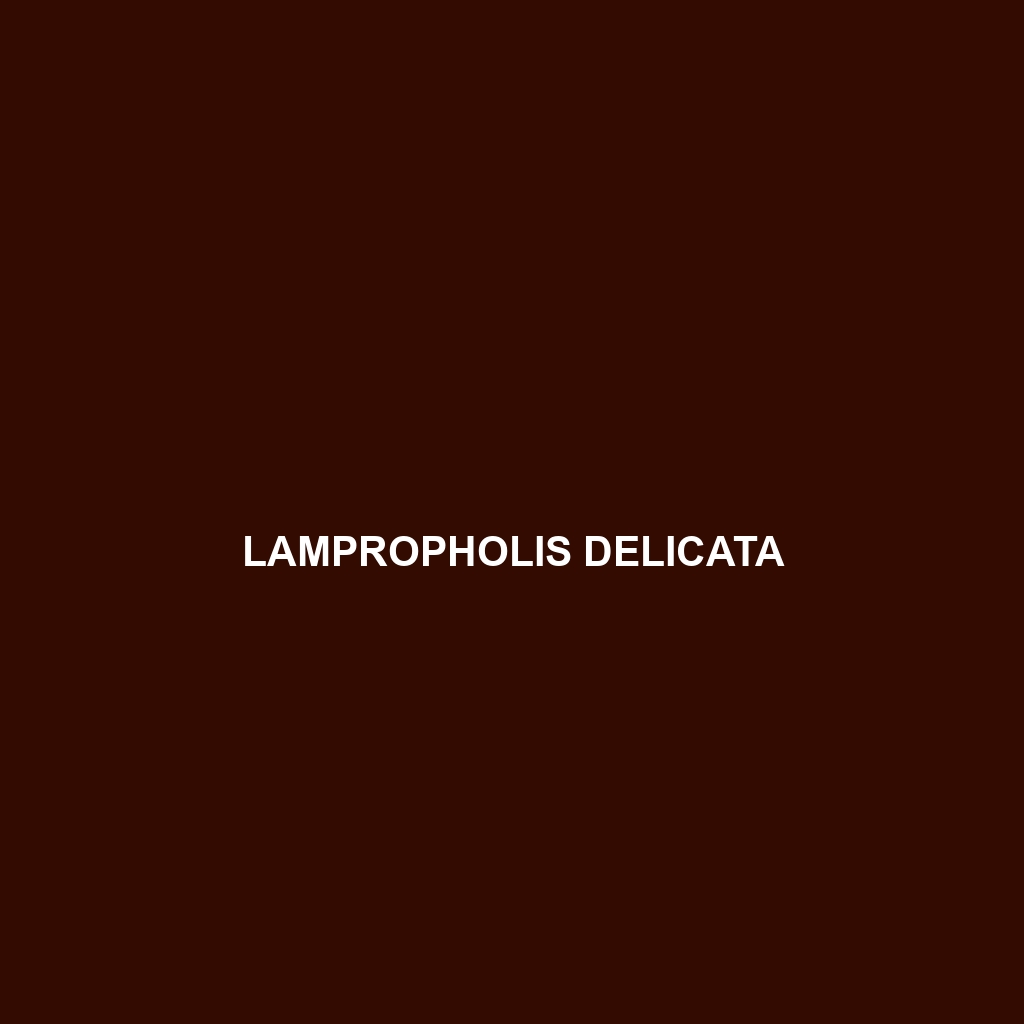Common Name
Lampropholis delicata
Scientific Name
Lampropholis delicata
Habitat
Lampropholis delicata, commonly known as the Common Garden Skink, is primarily found in a variety of habitats across southern and eastern Australia. This adaptable species thrives in ecosystems ranging from rainforests and savannas to temperate forests and urban gardens. The Common Garden Skink typically prefers areas with ample leaf litter, logs, and rocky substrates, providing shelter and foraging opportunities. It can also be spotted in marine habitats close to coastline ecosystems where it benefits from the local biodiversity.
Physical Characteristics
Measuring around 8 to 10 cm in length, the Lampropholis delicata displays a slender body shape characteristic of skinks. Its skin is smooth and glossy, often exhibiting a range of colors from light brown to dark brown, sometimes with distinct stripes that run along the length of its body. These stripes can be pale yellow or white, providing camouflage among foliage and ground debris. The skink’s eyes are bright and sharp, adapted for detecting potential predators in their environment. Their small size and quick movements contribute to their ability to evade threats effectively.
Behavior
The Common Garden Skink is primarily diurnal, with a tendency to bask in the sun during the day. They are highly active lizards that display various interesting behaviors including nocturnal behavior during warmer months. Hiding under rocks or in leaf litter, these skinks exhibit a tendency to dwell alone or interact minimally with others, though larger groups can occasionally be observed in rich habitats. Their mating rituals are intriguing, often involving elaborate courtship displays where males vibrate their bodies and display their vibrant skin colors to entice females.
Diet
Lampropholis delicata is primarily an insectivore, feeding on a variety of small invertebrates such as insects, spiders, and sometimes even small slugs. Their diet is crucial for controlling insect populations in their habitats. The skinks forage actively and are known to hunt by sight, showing agility and speed in capturing their prey. Occasionally, they may consume fruits or plant material, allowing them to exhibit some omnivorous behavior depending on food availability.
Reproduction
The reproductive cycle of Lampropholis delicata is seasonal, with most breeding occurring during the warmer months of spring and early summer. Mating displays can last several weeks, during which males compete for the attention of females. After a gestation period of about 3 to 6 weeks, females will lay clutches ranging from 3 to 16 eggs, depending on environmental conditions. The eggs are typically deposited in moist soil or leaf litter, where warmth helps incubate them. Once hatched, the juveniles can fend for themselves, showcasing remarkable independence from birth.
Conservation Status
Currently, Lampropholis delicata is classified as least concern by the International Union for Conservation of Nature (IUCN). It benefits from its adaptability to various environments, including urban settings. However, threats due to habitat destruction, invasive species, and climate change pose challenges to its population stability. Conservation efforts are focused on habitat preservation and maintaining biodiversity in regions where these skinks are prevalent.
Interesting Facts
One fascinating aspect of Lampropholis delicata is its remarkable ability for autotomy, meaning it can shed its tail to escape predators. The lost tail may eventually regenerate, although it may not be as perfectly shaped as the original. The skink’s ability to change coloration mildly based on its environment also plays a role in their survival, making them less visible to predators. Additionally, they have been observed displaying a unique behavior called ‘social thermoregulation,’ whereby they gather to share body heat during cooler temperatures.
Role in Ecosystem
Lampropholis delicata plays a critical role in its ecosystem as a predator of pests, helping to control insect populations. By doing so, they contribute to ecological balance and health within their habitats. As both predator and prey, these skinks are integral to food webs, supporting larger animals such as birds and mammals that rely on them for sustenance. Furthermore, their presence indicates a healthy ecosystem, making them valuable bioindicators of environmental quality.
